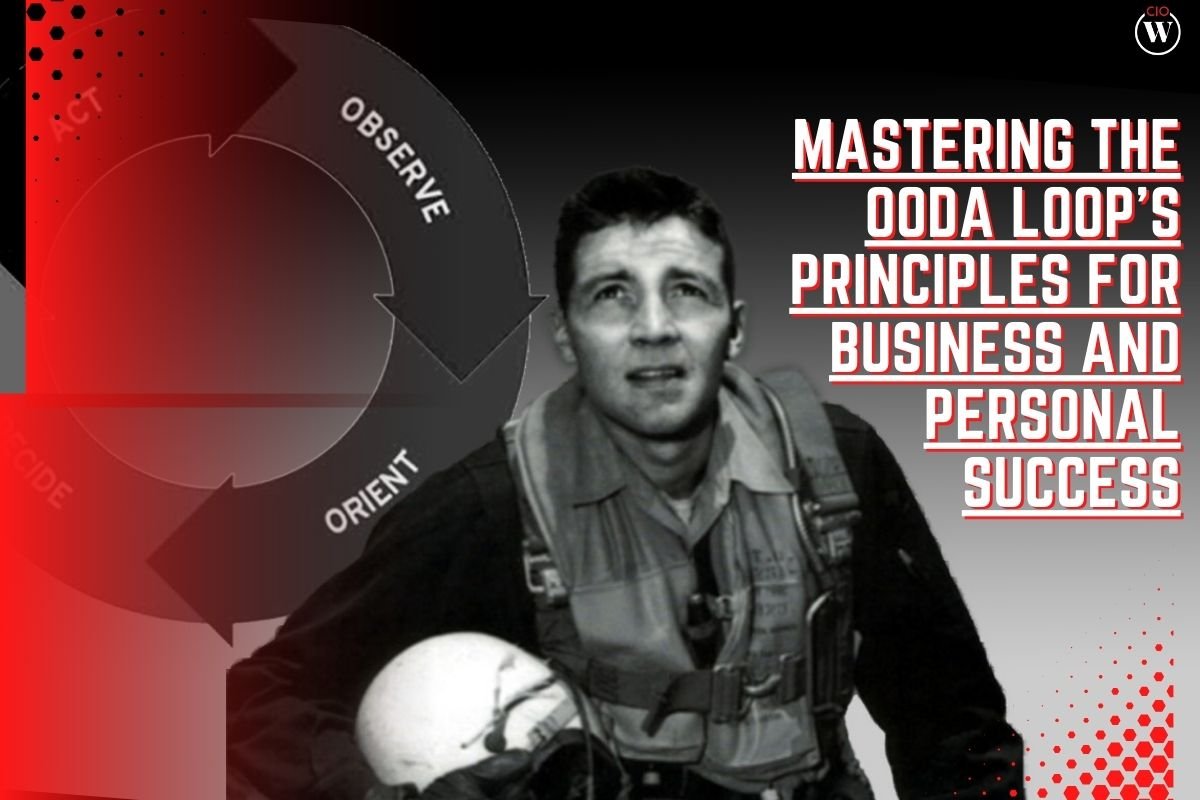In today’s fast-paced world, making effective decisions quickly is critical for both businesses and individuals. One powerful framework to enhance decision-making processes is the OODA Loop. Developed by military strategist Colonel John Boyd, the OODA Loops principles provide a systematic approach to navigate complex situations and achieve success. This blog will delve into the OODA Loops principles, exploring its origins, components, applications, and how it can be leveraged for competitive advantage.
What is the OODA Loop?
The OODA Loop stands for Observe, Orient, Decide, and Act. It was initially developed for military purposes to outmanoeuvre adversaries in combat. However, its principles have proven to be universally applicable, extending into business, sports, healthcare, and personal development. The OODA Loop helps individuals and organizations to swiftly adapt to changing circumstances, making it a vital tool for thriving in dynamic environments.
The Four Phases of the OODA Loop
1. Observe
The first phase of the OODA Loop is Observe. This involves gathering information about the environment, understanding the context, and recognizing any changes or threats. Effective observation requires acute awareness and the ability to filter relevant information from noise.
Key activities in the Observe phase include:
- Monitoring external factors such as market trends, competitor actions, and technological advancements.
- Internal assessment of strengths, weaknesses, opportunities, and threats (SWOT analysis).
- Continuous surveillance to detect early signs of change or disruption.
2. Orient
The second phase is Orient. This is the most crucial and complex phase, where the information gathered is analyzed and synthesized to form a clear understanding of the situation. Orientation involves:
- Interpreting the data collected during the observation phase.
- Integrating new information with existing knowledge and experiences.
- Recognizing patterns and trends to anticipate future developments.
Orientation is influenced by various factors, including cultural traditions, genetic heritage, and previous experiences. Effective orientation requires critical thinking, open-mindedness, and the ability to question assumptions.
3. Decide
The Decide phase involves selecting a course of action based on the insights gained during the Orient phase. Decision-making should be timely and informed, balancing speed and accuracy. Key aspects of this phase include:

- Evaluating different options and their potential outcomes.
- Considering both short-term and long-term impacts of the decision.
- Making a choice that aligns with overall objectives and values.
In a business context, this might involve choosing a strategic direction, launching a new product, or reallocating resources. For individuals, it could mean deciding on a career move or resolving a personal dilemma.
4. Act
The final phase is Act. This is where the decision is implemented. Action transforms decisions into tangible results. Key considerations for this phase include:
- Executing the chosen course of action efficiently and effectively.
- Communicating the decision and coordinating efforts among stakeholders.
- Monitoring the outcomes and making necessary adjustments.
The Act phase often loops back to the Observe phase, as the results of the action provide new information that needs to be observed and integrated into future decisions. This cyclical process ensures continuous improvement and adaptability.
Applications of the OODA Loop
Business Strategy
In the business world, the OODA Loop is instrumental in strategic planning and operational execution. Companies use the OODA Loop to:
- Outmanoeuvre Competitors: By observing market trends and competitor behaviors, businesses can orient themselves to exploit opportunities, make swift decisions, and act before competitors.
- Innovate Continuously: The OODA Loop fosters a culture of continuous learning and adaptation, encouraging businesses to innovate and stay ahead of industry shifts.
- Crisis Management: During crises, the OODA Loop enables businesses to respond quickly and effectively, minimizing damage and capitalizing on emergent opportunities.
Sports and Athletics
Athletes and coaches apply the OODA Loops principles to gain a competitive edge. For example:
- Game Strategy: Teams observe opponents’ tactics, orient by analyzing strengths and weaknesses, decide on game plans, and act by executing plays.
- Performance Improvement: Athletes continuously observe their performance, orient through feedback, decide on training adjustments, and act by implementing changes.
Healthcare
In healthcare, the OODA Loop enhances patient care and operational efficiency. Applications include:

- Clinical Decision-Making: Doctors observe patient symptoms, orient by diagnosing, decide on treatment plans, and act by administering care.
- Hospital Management: Administrators use the OODA Loop to optimize resource allocation, improve patient flow, and respond to emergencies.
Personal Development
Individuals can use the OODA Loops principles for personal growth and decision-making. Examples include:
- Career Planning: Observe industry trends, orient by assessing skills and opportunities, decide on career moves, and act by pursuing goals.
- Problem Solving: Apply the OODA Loop to navigate personal challenges, from financial decisions to relationship issues.
Leveraging the OODA Loop for Competitive Advantage
To harness the power of the OODA Loop, consider the following strategies:
Embrace Agility
Incorporate agility into your organizational culture. Encourage flexible thinking and rapid adaptation to changing circumstances. This involves training employees to:
- Stay informed about industry developments.
- Question assumptions and think critically.
- Be proactive in identifying and responding to opportunities and threats.
Invest in Data and Technology
Effective observation and orientation depend on accurate, timely information. Invest in data analytics and technology to:
- Monitor market trends and customer behaviors.
- Analyze data to gain insights and make informed decisions.
- Implement tools that facilitate communication and coordination.
Foster a Learning Culture
Continuous learning is vital for effective orientation. Foster a culture where learning and improvement are prioritized. This can be achieved by:
- Encouraging employees to pursue ongoing education and training.
- Creating platforms for knowledge sharing and collaboration.
- Implementing feedback mechanisms to learn from successes and failures.
Enhance Decision-Making Skills
Develop strong decision-making skills within your team. This involves:
- Training in decision-making frameworks and techniques.
- Practicing scenario planning and simulations.
- Encouraging a balanced approach to decision-making that considers both intuition and analysis.
Streamline Execution
Efficient execution is critical for translating decisions into actions. Streamline processes to ensure effective implementation by:
- Standardizing procedures and workflows.
- Ensuring clear communication and accountability.
- Continuously monitoring and refining execution strategies.
Implementing the OODA Loop
To implement the OODA Loop effectively, consider the following steps:

- Establish Observation Mechanisms: Set up systems to gather relevant information continuously. This could include market research, competitive analysis, and internal performance metrics.
- Develop Analytical Capabilities: Train teams to analyze and interpret data effectively. Encourage critical thinking and cross-functional collaboration to integrate diverse perspectives.
- Streamline Decision-Making Processes: Create clear decision-making frameworks that balance speed and thoroughness. Empower teams to make decisions at the appropriate levels.
- Ensure Efficient Execution: Develop robust implementation plans with defined roles and responsibilities. Use project management tools to track progress and adjust as needed.
- Foster a Feedback Loop: Create mechanisms for feedback and learning. Regularly review outcomes and incorporate lessons learned into future cycles of the OODA Loop.
Conclusion
The OODA Loops principles of Observe, Orient, Decide, and Act offer a powerful framework for navigating complexity and achieving success. Whether in business, sports, healthcare, or personal development, the OODA Loop enhances decision-making, fosters agility, and drives continuous improvement. By embracing the OODA Loop, individuals and organizations can stay ahead of the curve, outmaneuver challenges, and capitalize on opportunities in an ever-changing world.









